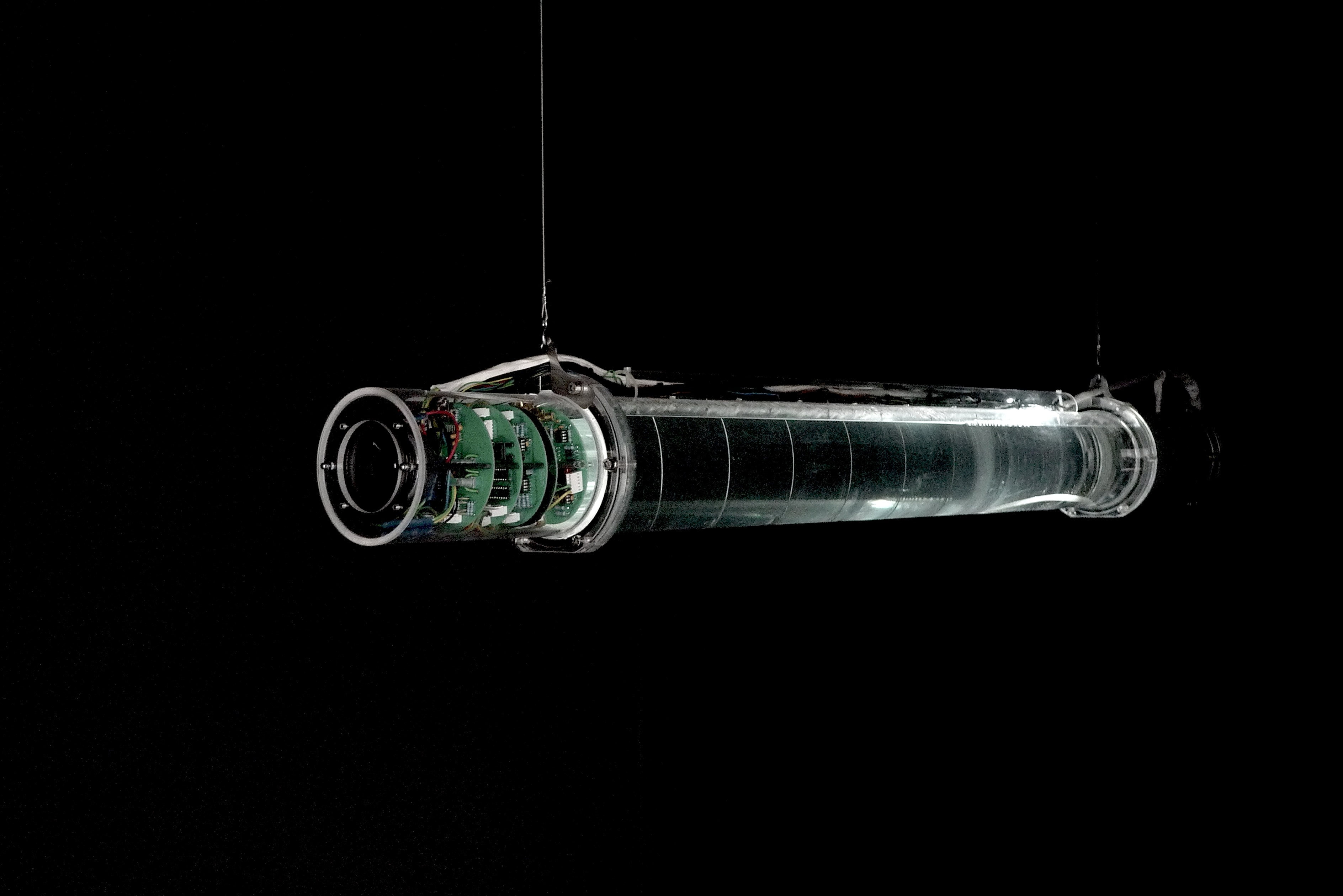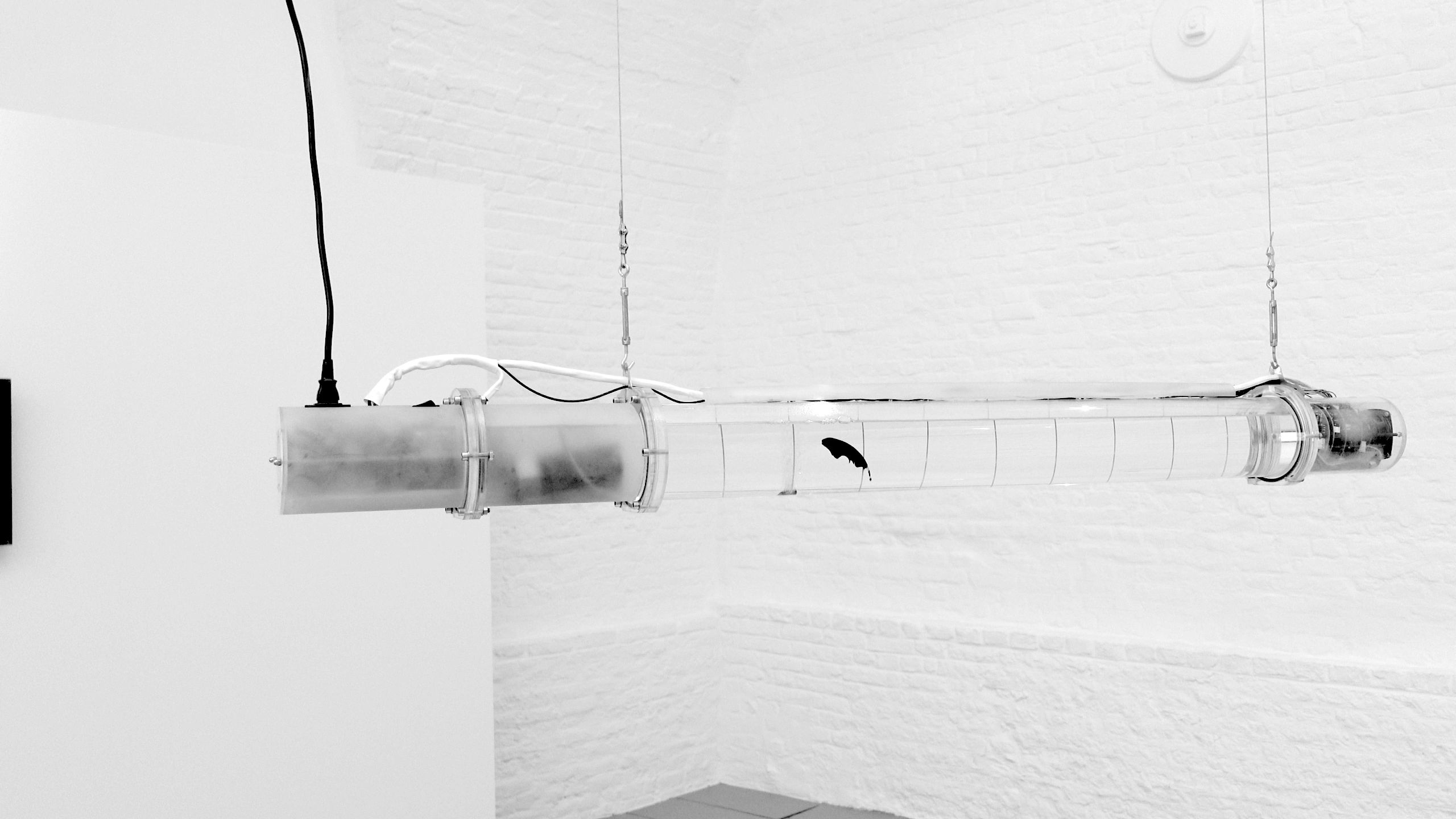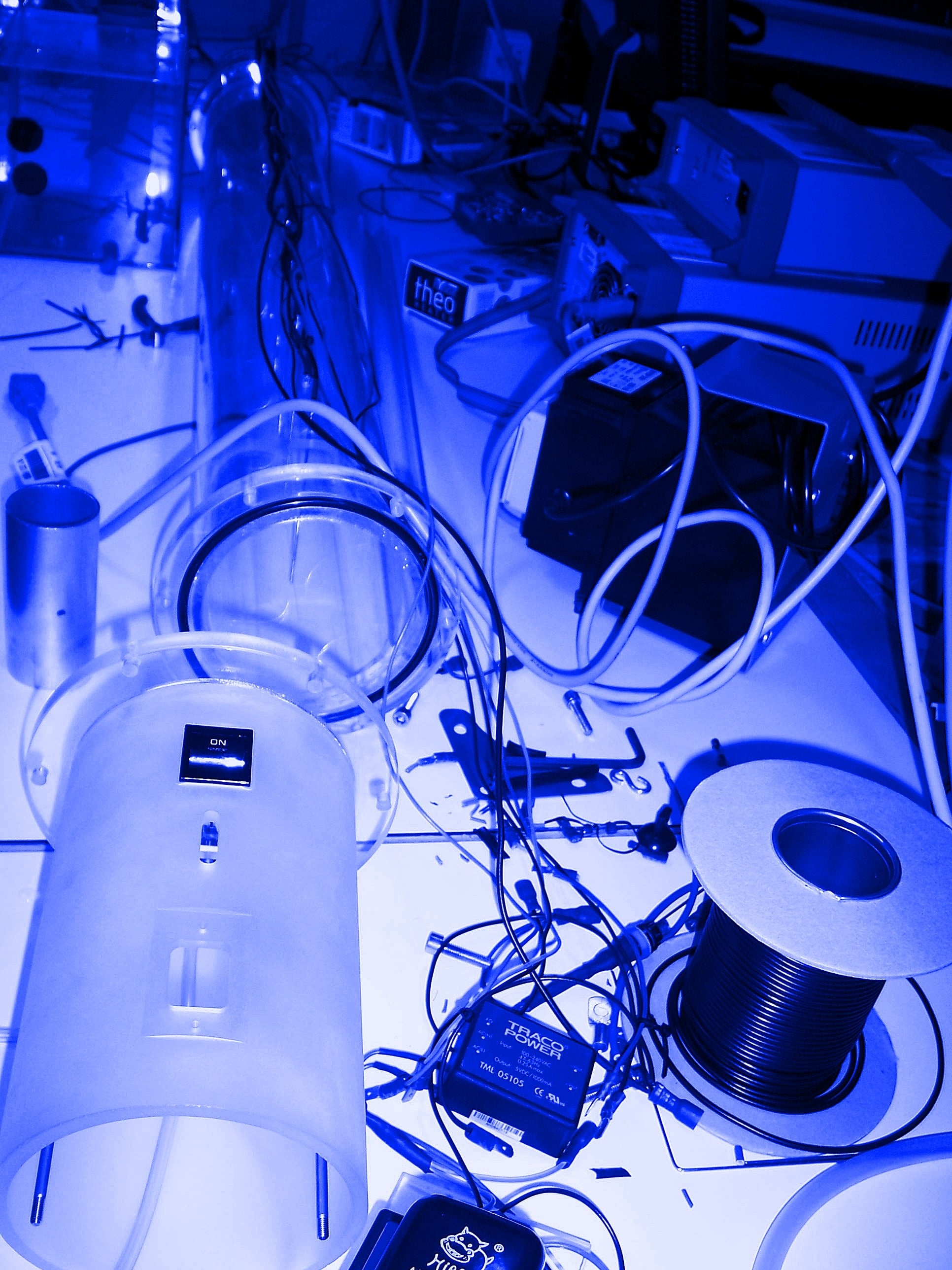EOD04
EOD04 is a new media installation based on special species of fish that perceive their environment, and communicate with each other, by emitting electric signals in water, either in pulses or waves. The project explores the electro-sensing and electro-communication mechanisms of weakly electrical fish, including JAR -the means by which a fish avoids attempts by other fish to jam its frequency- and thus investigates communication and non-communication between individual fish as well as between fish and people (interspecies communication).
The installation is based on 3 plexiglass tubes (1200 L x 20Ø) with a custom integrated audio filtering and amplifying and electro tracking system. Each tube contains an array of antennas/electrodes allow to capture the fish signals, which are directly linked to two speakers transforming these signals into sound. What the viewer hears is the fish electro-communication and active object sensing and communication apparatus. Furthermore, in each tube an array of LED light is placed. The light tracks the fish position based on its EOD. The sound can be routed out of the tubes by using a stereo mini-jack.
Biomimetic Futures
Inspired by the remarkable capabilities of weakly electric fish in detecting and recognizing objects with their electric sense, one could design technical sensor systems that can solve sensing problems by applying the principles of active electrolocation to devices that produce electrical current pulses in water and simultaneously sense local current densities. Depending on the specific task, sensors can be designed which detect an object, localize it in space, determine its distance, and measure certain object properties such as material properties, thickness, or material faults. Infused with artificial intelligence it could create holistic ecosystems that connect the physical architecture with the living (eco)systems.
Bio-Electricity: A Spark in The Darkness
There are many other life-electricity associations that come to mind, they are more tenuous but they are there, mostly fiction or anecdotal. When they clone an animal, they first take an egg cell and remove the original genes and substitute the DNA from the animal they want to clone. They then have to zap the cell with electricity which starts the first division. Michelangelo depicting the Creation of Adam had God giving Adam the spark of life. In Frankenstein, the monster is brought to life with a spark from captured lightning. Our own nervous system uses an electrochemical signaling system, like an incessant ‘electric storm.’
The modern world is dominated by electricity with an endless profusion of it’s technological applications. In medicine, and particularly in fields more or less connected to neurosciences – electricity is even more pervasive. Most of the electric apparatus we developed and knowledge that we acquired over the years is thanks to the study of the electric fish. From this perspective EOD04 can be contextualised as a media archeology work of art.
Electro-Communication
Communication can go far beyond the ‘common one’. Weakly electric fishes, for instance, develop intricate and fascinating ways to communicate. They ‘sing’ electric duets, electric courtship songs and sabotage each others frequencies to create an intelligent network of communication signals. Technology makes these signals touchable, audible and visibly perceivable and introduces new dimensions of communication, compromising the prevailing anthropocentric viewpoint in art. As a consequence; a new concept and perspective upon ‘man – nature – technology’ interaction is born in art. The concept exists through a technologically mediated ecosystem from which the artist extracts information. It’s novel, because of the high level of technological control over these biological systems, a prime requirement to make a radical change in interspecies communication possible
◊ EOD04 is a produced by Frederik De Wilde with the support of the University HasseltSpecial thanks to Prof. Jean Manca and lab manager Michel De Roeve.






